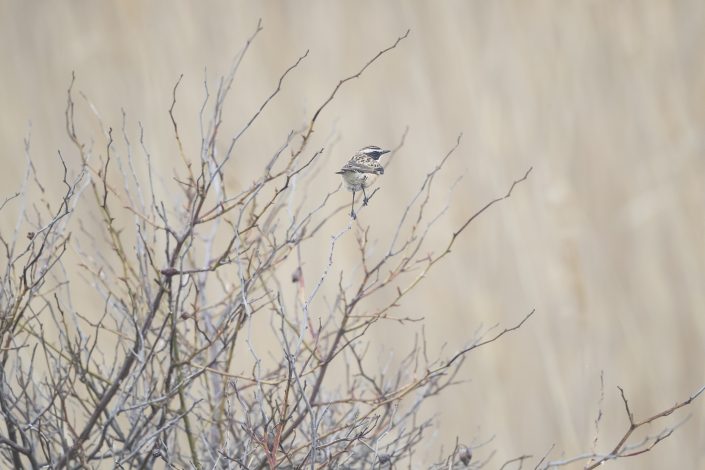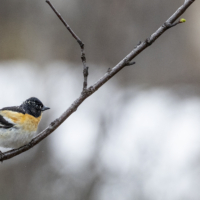This post is also available in: Swedish
Whinchat – Saxicola rubetra
Whinchat – Saxicola rubetra
is a small migratory passerine bird breeding in Europe and western Asia and wintering in central Africa. It is now placed in the Old World flycatcher family, Muscicapidae. The whinchat is a solitary species, favouring open grassy country with rough vegetation and scattered small shrubs. It perches in elevated locations ready to pounce on the insects and other small invertebrates that form its diet. The nest is built by the female on the ground in coarse vegetation, with a clutch of four to seven eggs being laid. The hen incubates the eggs for about thirteen days and then both parents feed the nestlings. Fledging takes place about eighteen days after hatching and the parents continue to feed the young for another fortnight.
The whinchat is a short-tailed bird, moving on the ground with small, rapid hops and frequently bobbing and flicking its wings and tail. It is similar in size to its relative the European robin (Erithacus rubecula), being 12 to 14 cm (4.7 to 5.5 in) long and weighing 13 to 26 g (0.46 to 0.92 oz). Both sexes have brownish upperparts mottled darker, a buff throat and breast, a pale buff to whitish belly, and a blackish tail with white bases to the outer tail feathers. The male in breeding plumage has a blackish face mask almost encircled by a strong white supercilium and malar stripe, a bright orange-buff throat and breast, and small white wing patches on the greater coverts and inner median coverts. The female is duller overall, in particular having browner face mask, pale buffy-brown breast, and a buff supercilium and malar stripe, and smaller or no white wing patches. Males in immature and winter plumage are similar to females, except that adult males retain the white wing patches all year round.
It sounds like this
Inspelning av Stein Nilsen från Xeno canto
























